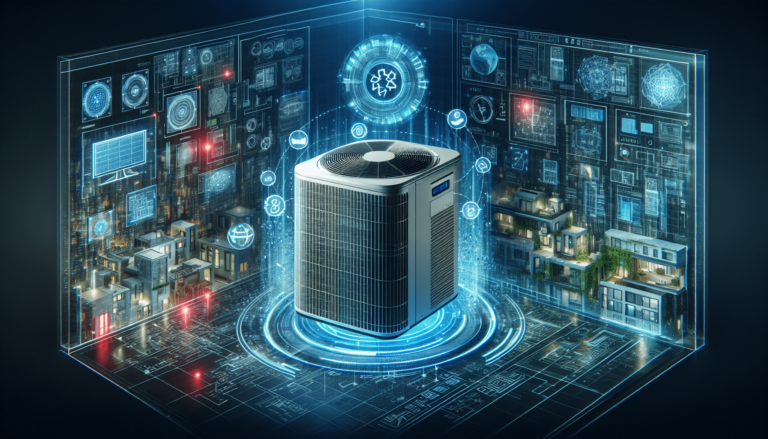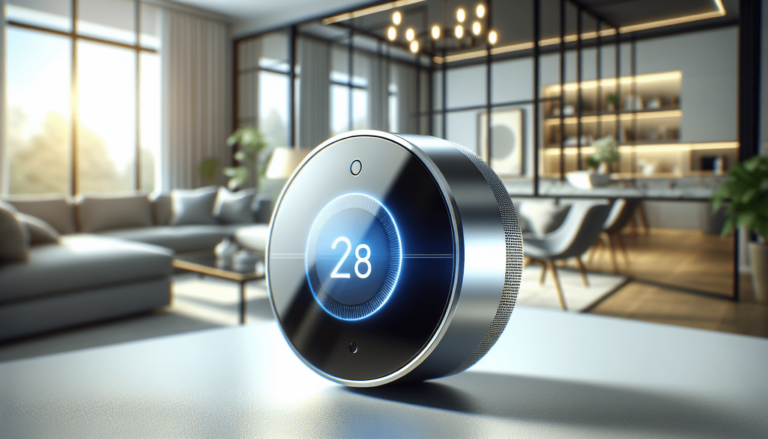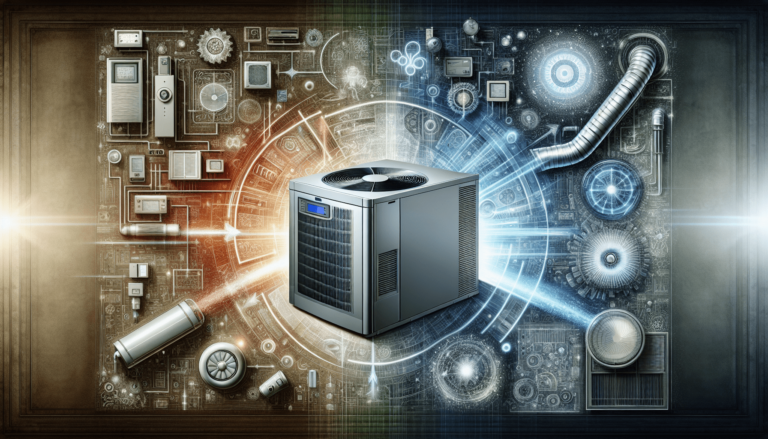

HVAC Services
Get Professional Repairs From The Area's Trusted HVAC Technicians. Ask About Our Services! We Offer Professional Heating & Cooling System Repairs And Guarantee Long-Lasting Results.
Got Question? Call us: (850) 678-2665Financing
The Role of IoT in HVAC Systems
Discover how the Internet of Things (IoT) is transforming HVAC systems, optimizing energy efficiency, and enhancing comfort levels in homes and businesses. Learn about the benefits of IoT integration and its role in remote monitoring, predictive maintenance, energy optimization, and cost savings. Revolutionize the way you control and monitor your HVAC system with IoT technology.
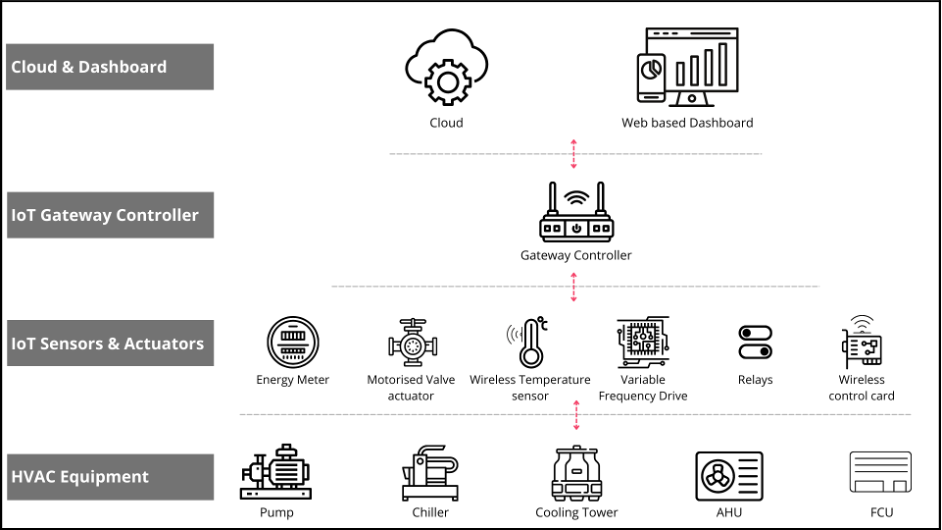
Imagine coming home after a long day, opening the front door, and feeling the perfect balance of comfort and fresh air. The Role of IoT in HVAC Systems is a fascinating topic that explores how the Internet of Things (IoT) is revolutionizing the way we control and monitor our heating, ventilation, and air conditioning systems. By seamlessly integrating smart devices and sensors, IoT technology enables us to optimize energy efficiency, improve indoor air quality, and enhance overall comfort levels in our homes and businesses. In this article, we will explore the many benefits and advancements that IoT brings to HVAC systems, making our lives easier and more comfortable than ever before.
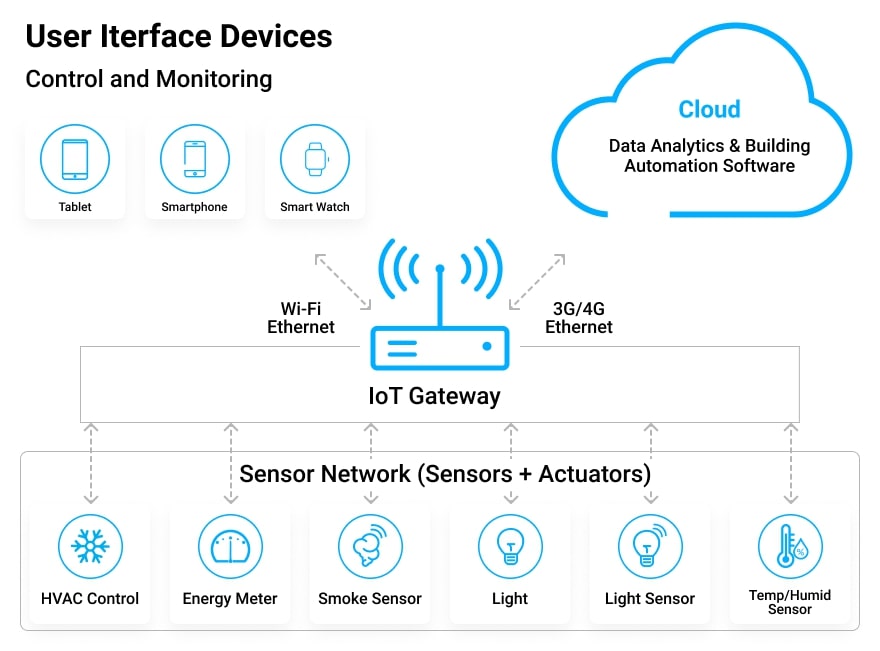
This image is property of www.softeq.com.
Overview of HVAC Systems
HVAC systems, short for Heating, Ventilation, and Air Conditioning systems, are vital in maintaining comfortable indoor environments. These systems play a significant role in various industries, including residential, commercial, and industrial sectors. An HVAC system’s primary function is to control the temperature, humidity, and airflow within a building, ensuring optimum comfort for occupants.
Introduction to HVAC Systems
Heating, Ventilation, and Air Conditioning (HVAC) systems are designed to provide a comfortable and healthy indoor environment. The heating component helps regulate the indoor temperature during cold weather, while the ventilation component ensures the circulation of fresh air. Air conditioning, on the other hand, focuses on cooling the indoor environment during hot weather. A well-designed HVAC system takes into account factors such as insulation, air quality, and energy efficiency to provide optimal comfort and functionality.
Components of HVAC Systems
HVAC systems consist of various components that work together to achieve temperature control, air quality management, and ventilation. These components include heating units (such as furnaces or heat pumps), cooling systems (such as air conditioners or chillers), ventilation systems (including air ducts and fans), and control systems (such as thermostats or sensors). Each component plays a crucial role in maintaining the desired indoor conditions and ensuring the system’s overall efficiency.
Importance of efficient HVAC Systems
Efficient HVAC systems are essential for several reasons. Firstly, they contribute to the overall comfort and well-being of occupants. A properly functioning HVAC system ensures that indoor temperatures are maintained at comfortable levels, preventing extreme cold or heat. Additionally, efficient HVAC systems also promote good indoor air quality by effectively circulating and filtering the air. Moreover, energy efficiency is another vital aspect of HVAC systems, as they consume a significant portion of a building’s energy. By employing energy-efficient HVAC systems, both residential and commercial properties can reduce their carbon footprint and save on energy costs.
Introduction to IoT
The Internet of Things (IoT) is a technological concept that involves the interconnection of everyday objects through the internet. IoT enables these objects to send and receive data, allowing for remote monitoring, control, and automation. The basic concept behind IoT involves collecting and analyzing data from connected devices to gain valuable insights and improve various aspects of our lives.
Definition and basic concept of IoT
The Internet of Things (IoT) refers to a vast network of interconnected devices that collect and exchange data through the internet. These devices, equipped with sensors, actuators, and connectivity capabilities, communicate with each other to perform tasks and provide valuable insights. The basic concept revolves around the idea of connecting everyday objects, such as appliances, vehicles, and even buildings, to the internet to enhance their functionality and optimize their performance.
Applications of IoT in various industries
The applications of IoT extend across various industries, including healthcare, transportation, agriculture, manufacturing, and, of course, HVAC systems. In healthcare, IoT devices can assist in patient monitoring and remote diagnosis. Transportation can benefit from IoT through fleet management and real-time tracking. Agriculture can utilize IoT for smart irrigation and crop monitoring. IoT has the potential to revolutionize and optimize processes across industries, making them more efficient, cost-effective, and environmentally friendly.
Benefits of IoT in improving efficiency and connectivity
The integration of IoT into various industries brings forth several benefits. Firstly, IoT enables improved efficiency by automating processes, predicting maintenance needs, and optimizing energy consumption. By utilizing real-time data from IoT devices, businesses can make informed decisions and take proactive measures. Additionally, IoT enhances connectivity by allowing remote access and control of devices, enabling businesses to monitor and optimize operations from anywhere at any time. The increased connectivity and efficiency offered by IoT present immense opportunities for enhancing productivity and improving overall performance.
Integration of IoT in HVAC Systems
The integration of IoT in HVAC systems has unlocked numerous possibilities for improving control, efficiency, and comfort. By connecting HVAC equipment and devices to the internet, building owners and facility managers can gain enhanced control and insights into their heating and cooling systems.
Advantages of integrating IoT in HVAC systems
Integrating IoT in HVAC systems provides several advantages. Firstly, it enables remote monitoring and control of HVAC equipment, allowing for real-time status updates, performance tracking, and issue detection. This remote accessibility reduces the need for on-site maintenance visits and saves time and resources. Moreover, IoT integration provides the capability to collect and analyze vast amounts of data from HVAC systems, enabling predictive maintenance, energy optimization, and fault detection. Additionally, IoT-enabled HVAC systems contribute to overall energy efficiency and cost savings, as they can adjust the temperature settings based on occupancy and prioritize energy consumption during peak hours.
Challenges and considerations in implementing IoT in HVAC systems
While integrating IoT in HVAC systems offers various benefits, there are also challenges and considerations to address. Data security and privacy are crucial aspects to prioritize when implementing IoT. Protecting sensitive information and ensuring secure connectivity must be high on the agenda. Additionally, compatibility issues may arise when integrating various IoT devices from different manufacturers. Proper planning and coordination are necessary to ensure seamless integration and interoperability. Lastly, organizations should also consider the initial investment required for IoT implementation and weigh it against the long-term benefits and potential cost savings.
Smart thermostats and their role in IoT-enabled HVAC systems
Smart thermostats, a popular example of IoT devices in HVAC systems, play a significant role in improving energy efficiency and comfort. These thermostats are equipped with sensors, Wi-Fi connectivity, and intelligent algorithms that learn and adapt to users’ preferences. By connecting to the internet, they enable remote control and monitoring of temperature settings, schedules, and energy usage. Smart thermostats provide features like occupancy detection, geolocation-based controls, and energy insights, allowing users to optimize their HVAC systems for maximum efficiency and comfort.
Remote Monitoring and Control
IoT integration in HVAC systems enables remote monitoring and control, revolutionizing the way these systems are managed. Through a centralized dashboard or a mobile application, authorized individuals can have real-time access to HVAC system data, status, and performance metrics.
Remote monitoring of HVAC systems using IoT
With IoT-enabled HVAC systems, remote monitoring becomes seamless. Building owners, facility managers, or HVAC technicians can access data, receive alerts, and track the performance of HVAC equipment from anywhere. The real-time monitoring capabilities allow for proactive maintenance, as issues can be detected and addressed promptly, reducing equipment downtime and potential system failures.
Real-time data collection and analysis
IoT integration in HVAC systems enables the collection of real-time data from sensors and connected devices. This data includes temperature, humidity, energy consumption, and air quality readings, among others. By continuously gathering and analyzing this data, patterns, trends, and anomalies can be identified. This valuable insight enables stakeholders to make data-driven decisions, optimize system performance, and enhance energy efficiency.
Adjusting temperature settings and energy optimization remotely
One of the significant advantages of remote monitoring and control is the ability to adjust temperature settings and optimize energy usage remotely. Through the IoT-connected interface, users can remotely modify the settings of individual HVAC units or entire systems based on occupancy, weather conditions, or other predetermined parameters. This remote control capability ensures that energy is not wasted in unoccupied areas and allows for energy optimization strategies such as load shedding during peak hours.
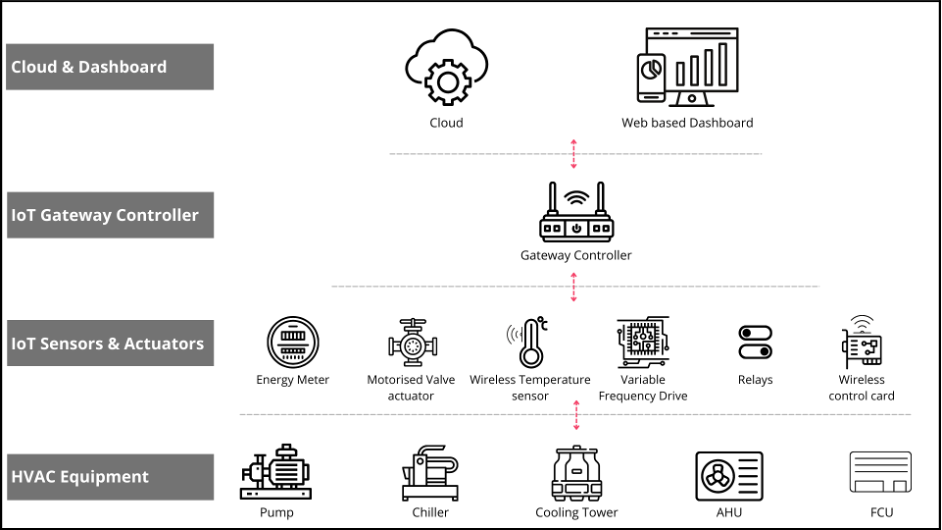
This image is property of www.zenatix.com.
Predictive Maintenance
Predictive maintenance is a crucial aspect of HVAC systems, as it helps prevent unexpected breakdowns, reduces downtime, and optimizes maintenance schedules. IoT integration plays a vital role in enabling predictive maintenance strategies for HVAC equipment.
Importance of predictive maintenance in HVAC systems
Predictive maintenance is essential for HVAC systems, as it helps identify potential faults and issues before they escalate into major problems. By regularly monitoring performance metrics and analyzing historical data, patterns and trends can be detected, indicating possible future failures. This proactive approach allows for timely repairs and replacements, minimizing equipment downtime, improving reliability, and extending the lifespan of HVAC systems.
Utilizing IoT for predictive maintenance
IoT integration enhances predictive maintenance capabilities in HVAC systems by collecting and analyzing real-time data. By equipping HVAC equipment with sensors that monitor various parameters (such as temperature, pressure, vibration, and energy consumption), deviations from normal behavior can be detected. Machine learning algorithms can then analyze this data and identify patterns or anomalies that indicate potential faults or maintenance needs. By leveraging IoT-enabled predictive maintenance, HVAC systems can operate at peak performance, reduce unnecessary maintenance costs, and maximize equipment lifespan.
Early detection of faults and potential issues
IoT integration enables early detection of faults and potential issues in HVAC systems. By continuously monitoring system performance and analyzing data, any abnormal behavior or deviations can be identified promptly. This allows for proactive measures to be taken, such as scheduling maintenance visits or replacing faulty components before they cause significant failures. Early detection of faults not only prevents unexpected breakdowns but also minimizes repair costs and ensures uninterrupted operation of HVAC systems.
Energy Efficiency and Cost Savings
Energy efficiency is a crucial aspect of HVAC systems, as they are responsible for a significant portion of a building’s energy consumption. IoT integration helps optimize energy usage and achieve substantial cost savings.
Impact of IoT on energy efficiency in HVAC systems
IoT integration has a significant impact on energy efficiency in HVAC systems. By collecting real-time data on temperature, humidity, occupancy, and energy consumption, IoT-connected HVAC devices can adjust settings and operations to maximize energy efficiency. For example, IoT-enabled thermostats can learn from occupants’ habits and adjust temperature settings accordingly. Additionally, HVAC systems can communicate with other connected devices, such as lighting systems, to synchronize energy usage and optimize overall efficiency.
Optimizing energy consumption through IoT-enabled controls
IoT-enabled controls provide the means to optimize energy consumption in HVAC systems. By utilizing data from occupancy sensors, smart thermostats can adjust temperature settings or turn off heating or cooling in unoccupied areas, reducing unnecessary energy usage. Furthermore, IoT integration enables HVAC systems to communicate with the electrical grid, allowing for intelligent load shedding during peak demand periods. These energy optimization strategies not only promote sustainability but also lead to substantial cost savings for building owners and managers.
Cost savings achieved through intelligent HVAC systems
By integrating IoT in HVAC systems, significant cost savings can be achieved. Energy optimization measures, such as adjusting temperature settings based on occupancy and synchronizing HVAC operations with other connected devices, reduce energy waste and result in lower utility bills. Moreover, IoT-enabled predictive maintenance helps minimize unexpected breakdowns and costly emergency repairs. By addressing maintenance needs proactively, HVAC system downtime and repair costs are reduced, resulting in long-term cost savings for building owners and facility managers.
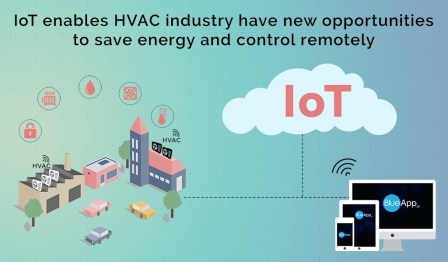
This image is property of electronicsandict.com.
Improved Comfort and Occupant Experience
Incorporating IoT into HVAC systems enables improved comfort and personalized experiences for building occupants. IoT-connected devices allow for the customization of settings based on individual preferences and provide insights into indoor air quality.
Customizable settings for improved comfort
With IoT-enabled HVAC systems, settings can be customized to meet individual comfort preferences. Smart thermostats, for instance, can learn occupants’ temperature preferences and adjust settings accordingly. This customization ensures that occupants feel comfortable in their environment, leading to increased satisfaction and productivity. Additionally, the ability to remotely adjust settings based on personal preferences allows for a seamless transition between indoor and outdoor environments, enhancing comfort further.
Monitoring and analyzing indoor air quality
Indoor air quality is a crucial aspect of occupant comfort and well-being. IoT integration allows for the monitoring and analysis of indoor air quality parameters, such as humidity levels, CO2 concentration, and particulate matter. By collecting this data and providing real-time insights, IoT-connected HVAC systems can automatically adjust ventilation rates, humidity levels, or air filtration systems to maintain optimal indoor air quality. This monitoring and control contribute to a healthier and more comfortable environment for occupants.
Occupancy detection and personalized climate control
IoT integration enables occupancy detection capabilities in HVAC systems. Occupancy sensors can identify whether a space is occupied or not, allowing HVAC systems to adjust temperature settings and ventilation rates accordingly. This personalized climate control ensures that energy is not wasted on heating or cooling unoccupied areas, leading to energy savings and improved comfort for occupied spaces. By tailoring the indoor climate to individual needs, IoT-enabled HVAC systems contribute to enhanced occupant experiences and satisfaction.
Smart Building Automation
IoT integration in HVAC systems is a part of the broader concept of smart building automation. By incorporating IoT technologies, building management systems can streamline operations, enhance energy efficiency, and optimize performance across various systems.
Integration of IoT in building management systems
IoT integration in building management systems allows for centralized control and monitoring of diverse systems, including HVAC, lighting, security, and more. These interconnected systems communicate with each other to optimize performance, enhance occupant comfort, and make efficient use of resources. By integrating IoT into building management systems, facilities can streamline operations, reduce costs, and improve overall building performance.
Centralized control and automation of HVAC systems
Through IoT integration, HVAC systems can be effectively controlled and automated as part of a smart building ecosystem. Centralized control systems allow for the management of individual HVAC units or entire systems from a single interface. This centralized control enables synchronized operations, optimal energy usage, and coordinated responses to environmental changes or occupancy patterns. Automation capabilities further enhance the functionality of HVAC systems by enabling them to adjust settings in real-time, based on inputs from various sensors and connected devices.
Optimizing energy usage across the entire building
Integration of IoT in building management systems, including HVAC systems, allows for optimized energy usage across the entire building. By sharing data and insights with other connected systems, such as lighting or occupancy sensors, energy consumption can be fine-tuned. For instance, if a space is unoccupied, the HVAC system can work in coordination with the lighting system to reduce energy usage. Additionally, data from HVAC systems can contribute to broader energy management strategies, allowing building managers to identify inefficiencies, implement load balancing measures, and optimize overall energy usage.
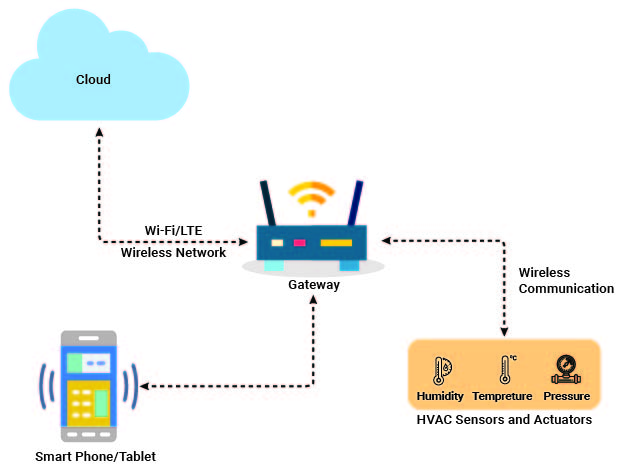
This image is property of www.volansys.com.
Data Analytics and Insights
IoT integration in HVAC systems generates a wealth of data that can be analyzed to derive valuable insights. Data analytics plays a crucial role in performance monitoring, detecting trends, and making proactive decisions.
Utilizing data analytics for performance monitoring
Data analytics tools enable the monitoring of various performance metrics in HVAC systems. By collecting and analyzing data on temperature, humidity, energy consumption, and more, stakeholders can gain insights into system performance. Real-time monitoring and historical trend analysis allow for the identification of patterns, deviations, or anomalies that may indicate potential issues or optimization opportunities. Performance monitoring through data analytics helps ensure HVAC systems operate at peak efficiency and effectiveness.
Identifying patterns and trends through data analysis
Through data analysis, patterns and trends can be identified, providing valuable insights into HVAC system performance. Analyzing historical data can help identify recurring issues, peak usage periods, or seasonal variations. Additionally, machine learning algorithms can analyze data from multiple HVAC systems to identify common inefficiencies or potential energy-saving measures. By uncovering patterns and trends, stakeholders can make informed decisions, prioritize maintenance tasks, and implement strategies for continuous improvement.
Predictive analytics for proactive decision-making
Predictive analytics leverages historical data and machine learning techniques to make informed predictions about future events. In the context of HVAC systems, predictive analytics can help anticipate maintenance needs, energy consumption patterns, or equipment failures. By deploying predictive models based on historical data and continuous monitoring, potential issues can be flagged before they escalate. Proactive decision-making based on predictive analytics helps prevent system failures, reduces downtime, and optimizes resource allocation and maintenance schedules.
Conclusion
IoT integration has revolutionized the HVAC industry, providing numerous benefits in terms of efficiency, control, and comfort. By connecting HVAC systems to the internet, stakeholders can gain real-time insights, optimize energy usage, enable remote monitoring and control, and implement predictive maintenance strategies. The seamless integration of IoT devices, such as smart thermostats and occupancy sensors, contributes to improved comfort, enhanced occupant experiences, and significant cost savings. As the technology continues to evolve, the future impact of IoT on HVAC systems is anticipated to bring further advancements and continuous improvements, further shaping the way we control and manage indoor environments.
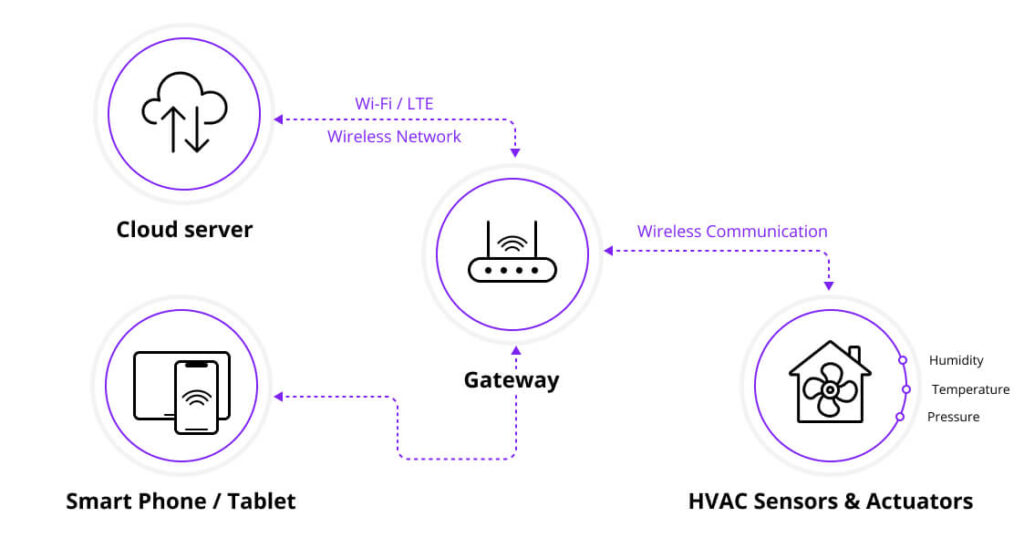
This image is property of euristiq.com.


